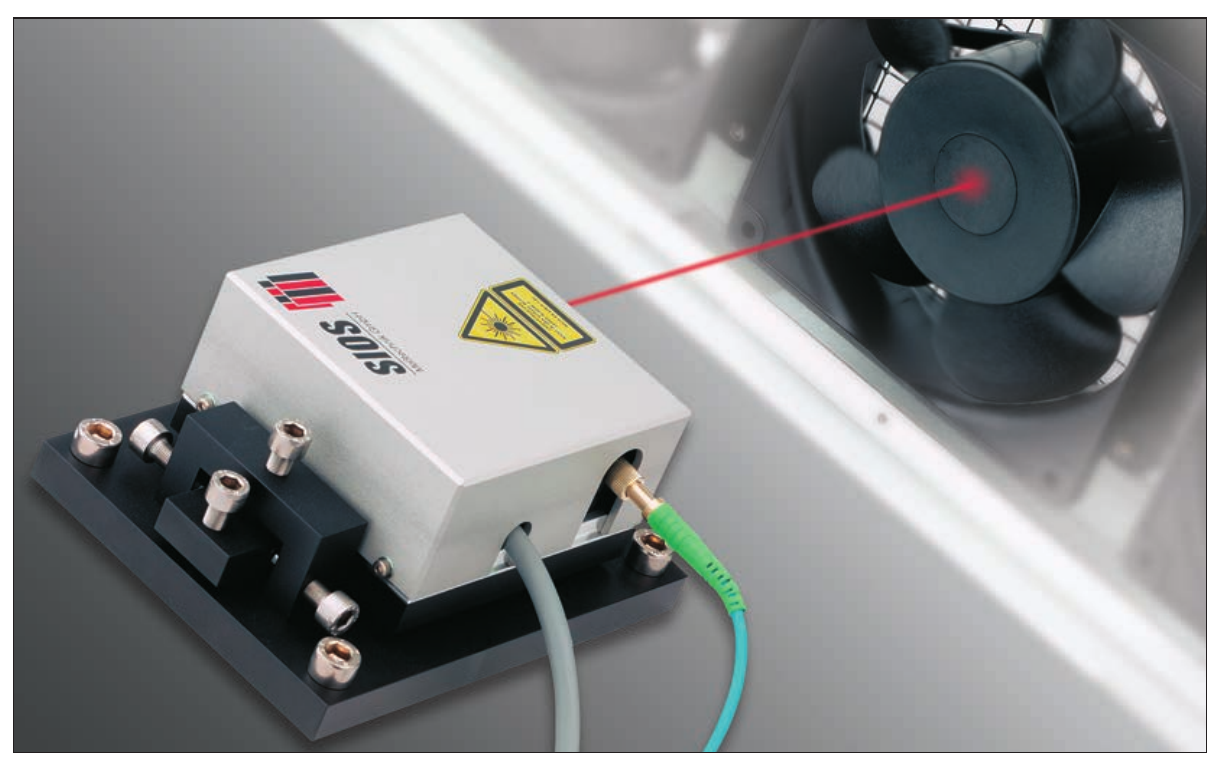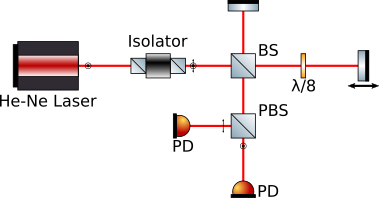This project will look at laser interferometry for length measurements.
Interferometry can be used to measure length displacements with high accuracy and resolution. Measuring length using interferometry relates the measurement to the definition of the meter, via the frequency $\omega = 2 \pi f$, or wavelength $\lambda$, of the laser source used, since the two are related by $\lambda = c/f$, where $c$ is the speed of light in vacuum. The accuracy of the measurement is therefore in principle only limited by how well the frequency of the laser source can be determined.

Displacement measurement using optical interferometry is mainly done using variants of the Michelson interferometer, using highly coherent and polarised light from a laser source. Resolution below 1 nm is routinely achieved in suitable environmental conditions, but the accuracy of the measurements are impacted due to several non-ideal effects, such as thermal drift in components causing misalignment and variable amplification, optical abberations as well as air flow and turbulence. Improved estimation methods can rectify some of these accuracy problems.

The exact scope, content and outcomes of the project will be agreed upon with the students considering their background and interests.
Expected outcomes
- Learning how to use a laser interferometer to measure displacement (distance).
- Understanding basic optics and models of the homodyne Michelson interferometer.
- Understanding the methods currently used (e.g. the Heydemann-method) to determine displacement from the interference signals.
- Identifying suitable estimation methods for estimating the parameters and signals in the model, such as the extended and unscented Kalman filter, and the particle filter.
- Improvements to the modelling, to better capture non-ideal effects.
- Determining under what conditions the parameter and signal estimates converge, and how to improve convergence rate.
- Performing experiments using a laser interferometer to collect data (dependent on funding for equipment).
- Comparing current methods with you developed method(s).
Resources
- Optical supplies for building a Michelson interferometer, photodiodes, analog-to-digital converters (if conducting experiments).
- MATLAB, Simulink, or similar software suitable for simulation physical models and implementing and comparing estimation methods.